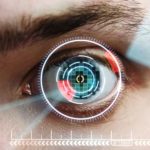IrisGuard is calling attention to a new study published in a recent issue of IEEE Transactions on Biometrics, Behavior, and Identity Science, which found no evidence of aging in the irises of children. The longitudinal study was conducted by researchers at Clarkson University, who used IrisGuard’s AD100 imager system to monitor the development of children’s irises over time.

The 209 children in the study were all between the ages of four and 11 when the study began, and their eyes were tracked over a period of three years. The researchers found that there was not a significant increase in the number of non-matches during that time, which suggests that the children’s irises were stable and did not change as they got older.
According to IrisGuard, the results prove that iris recognition is one of the most reliable biometric modalities. Iris images captured when someone is young can still be used to identify that same person as they get older. In contrast, the accuracy of facial recognition can decrease over time due to the natural effects of aging. With that in mind, users would occasionally need to create a new biometric template in order to maintain the same level of performance.
The authors of the study noted that it is difficult to get children to sit still for an iris scan. However, IrisGuard suggested that its patented pupil control method helped the researchers to overcome that problem and generate consistent results.
“I am delighted that our iris recognition camera has proven its value in this ground-breaking study,” said IrisGuard Founder and CTO Imad Malhas. “We have always known that pupil dilation causes major compromise on scanned data and that for our real-time verification of millions of people, this level of accuracy was mandatory.”
IrisGuard’s technology has been deployed in a number of different border control and payment schemes. The UN is currently using the company’s ISO-certified EyePay system to distribute financial aid to refugees in Egypt.
–
February 12, 2021 – by Eric Weiss







Follow Us